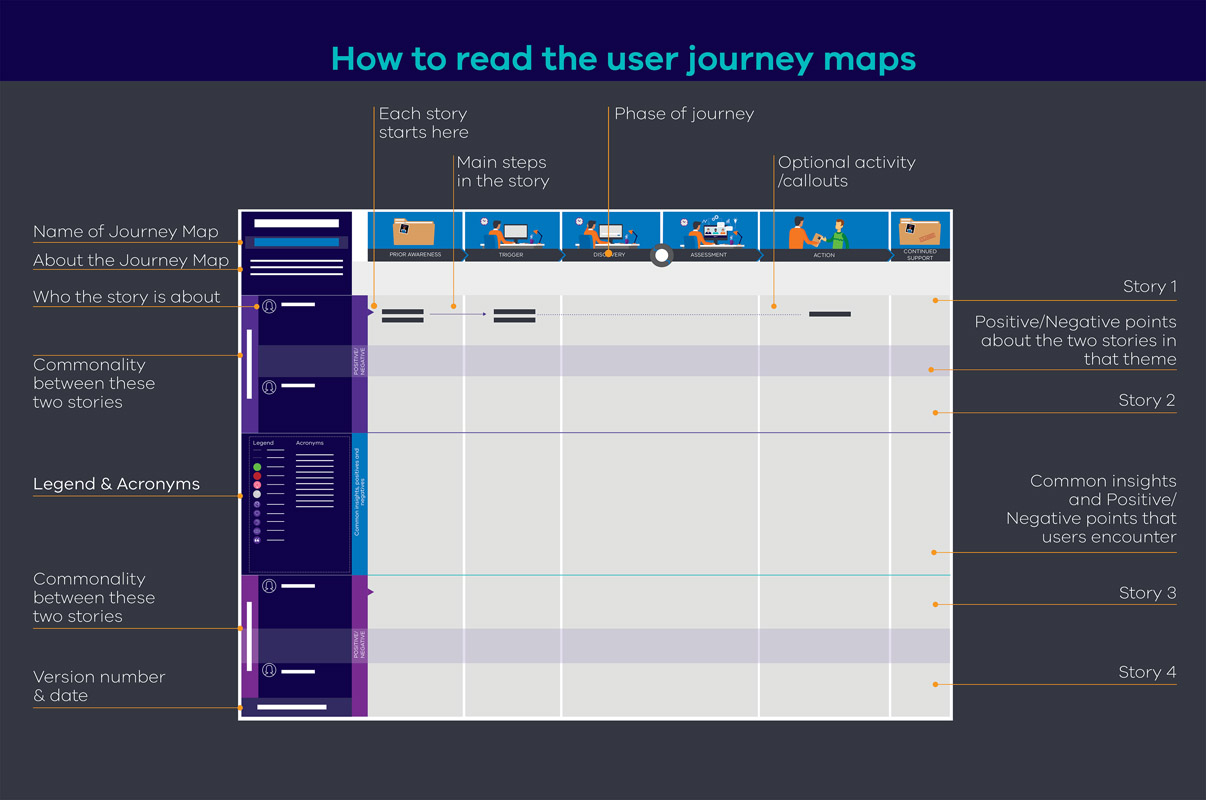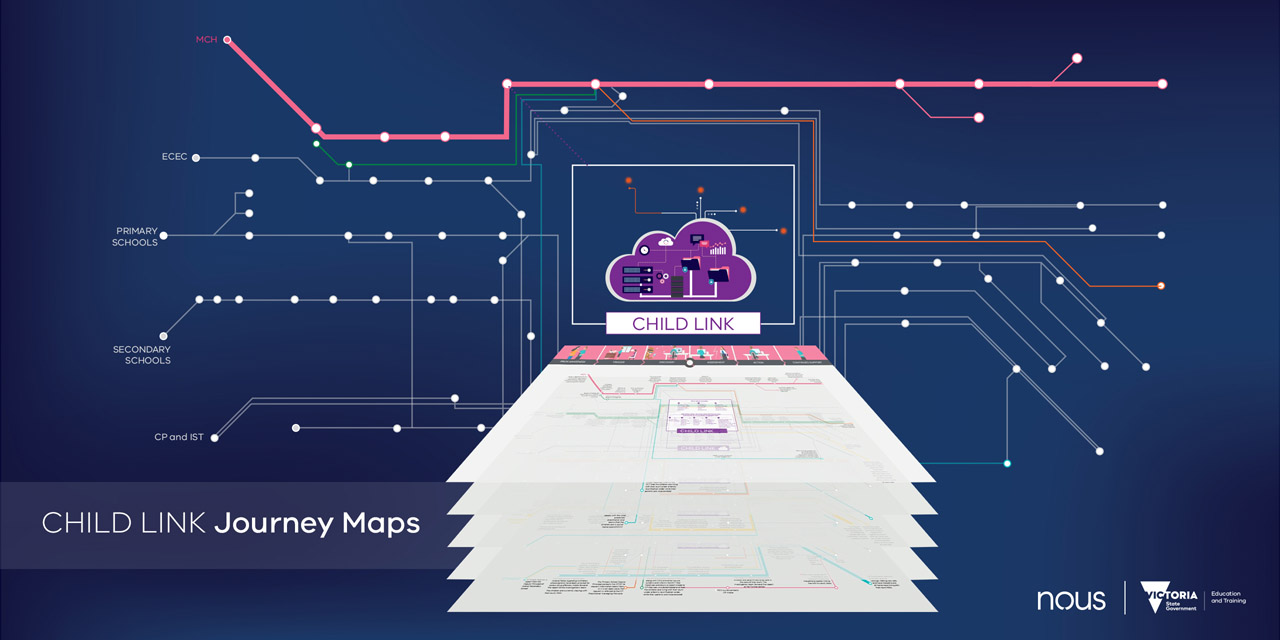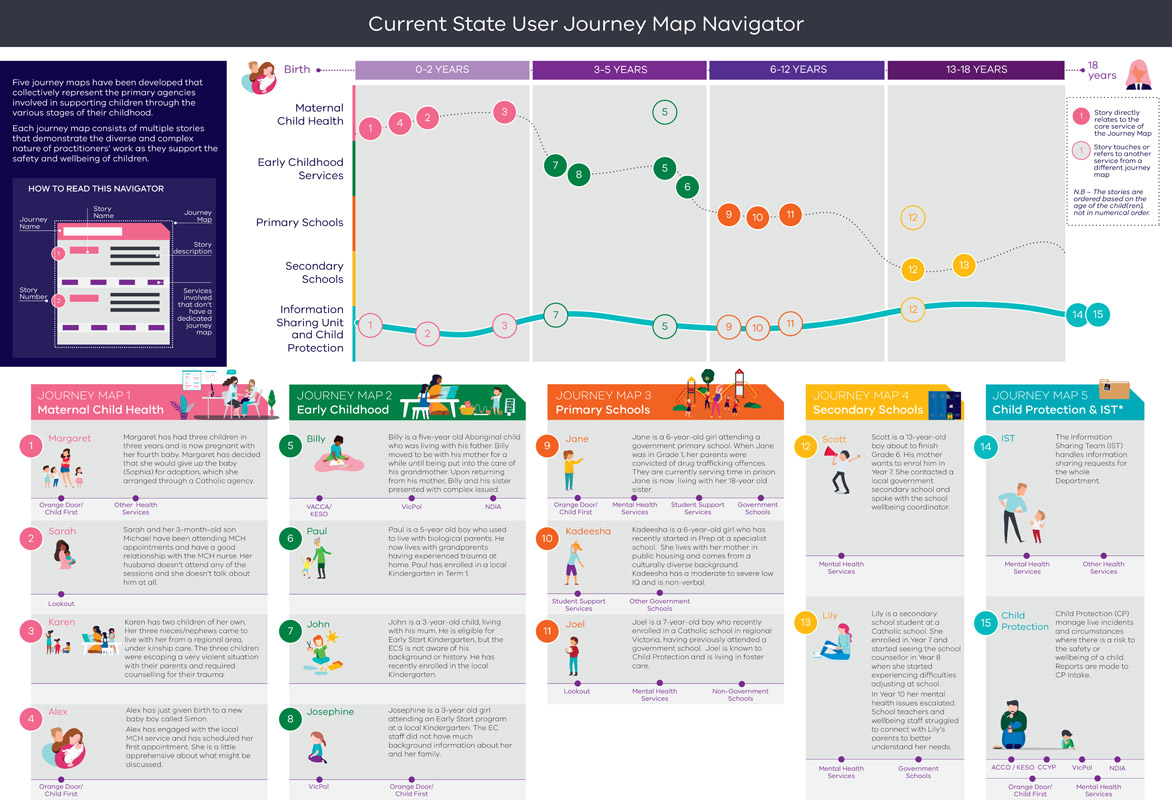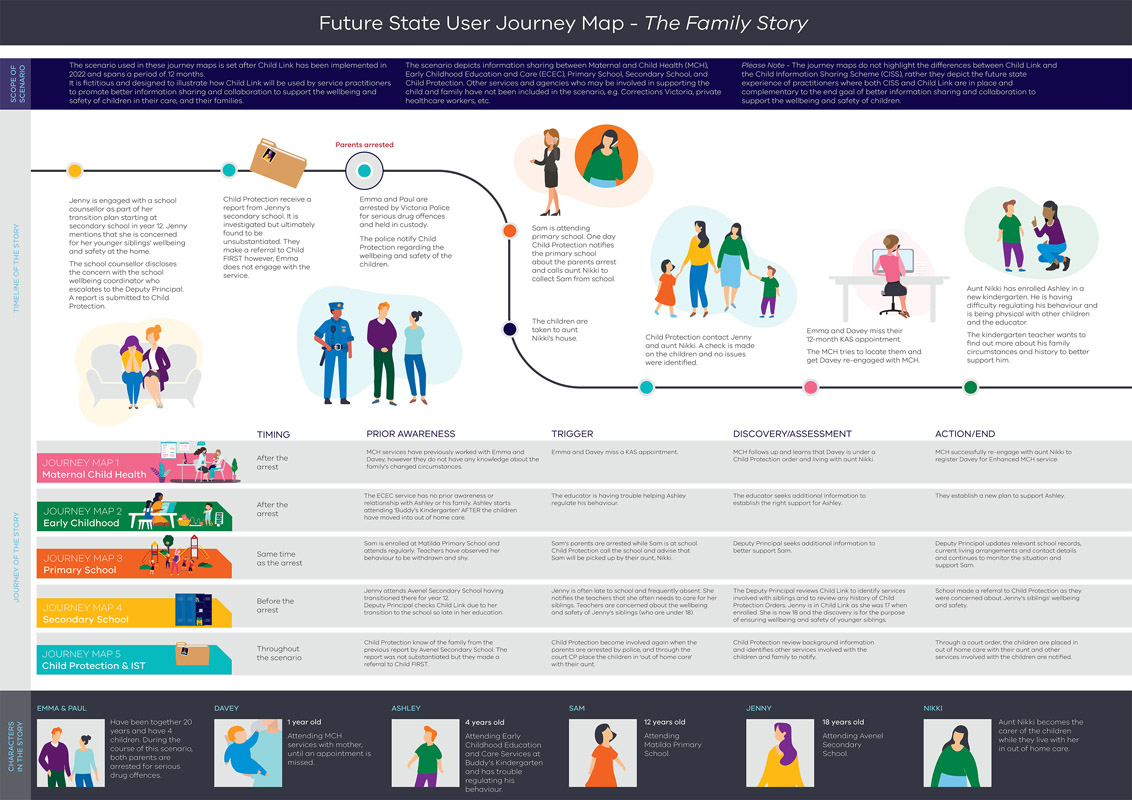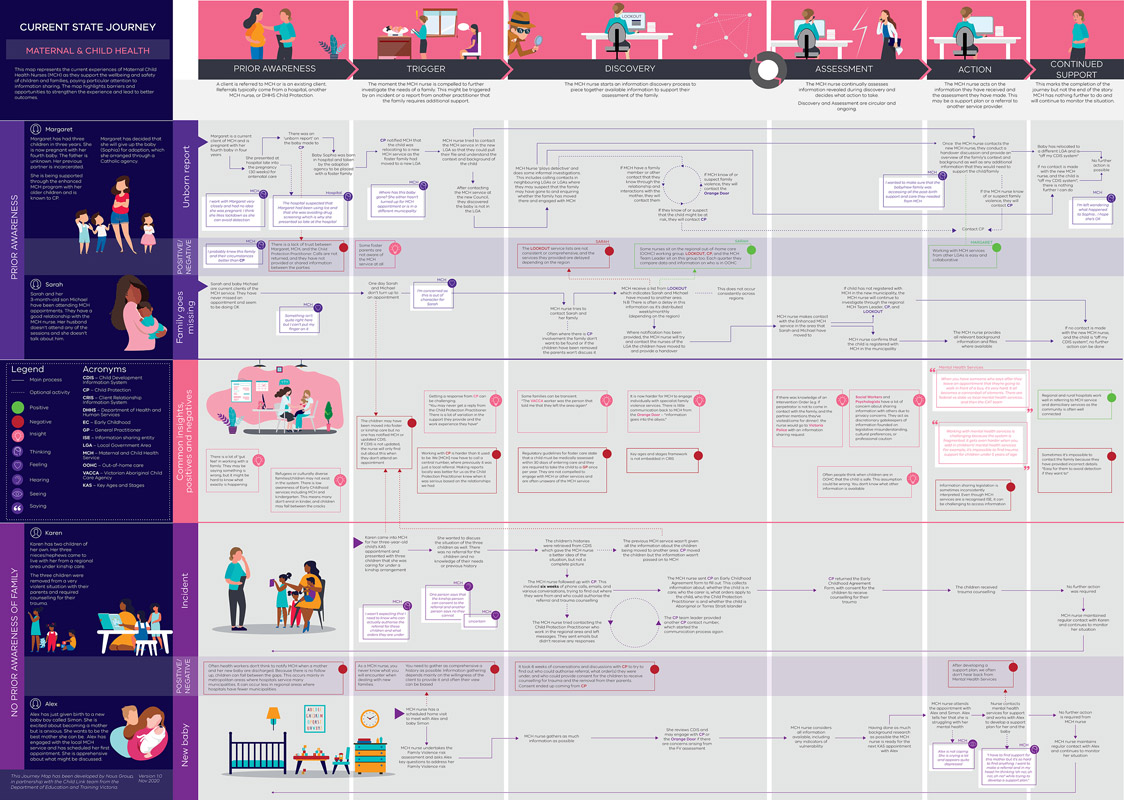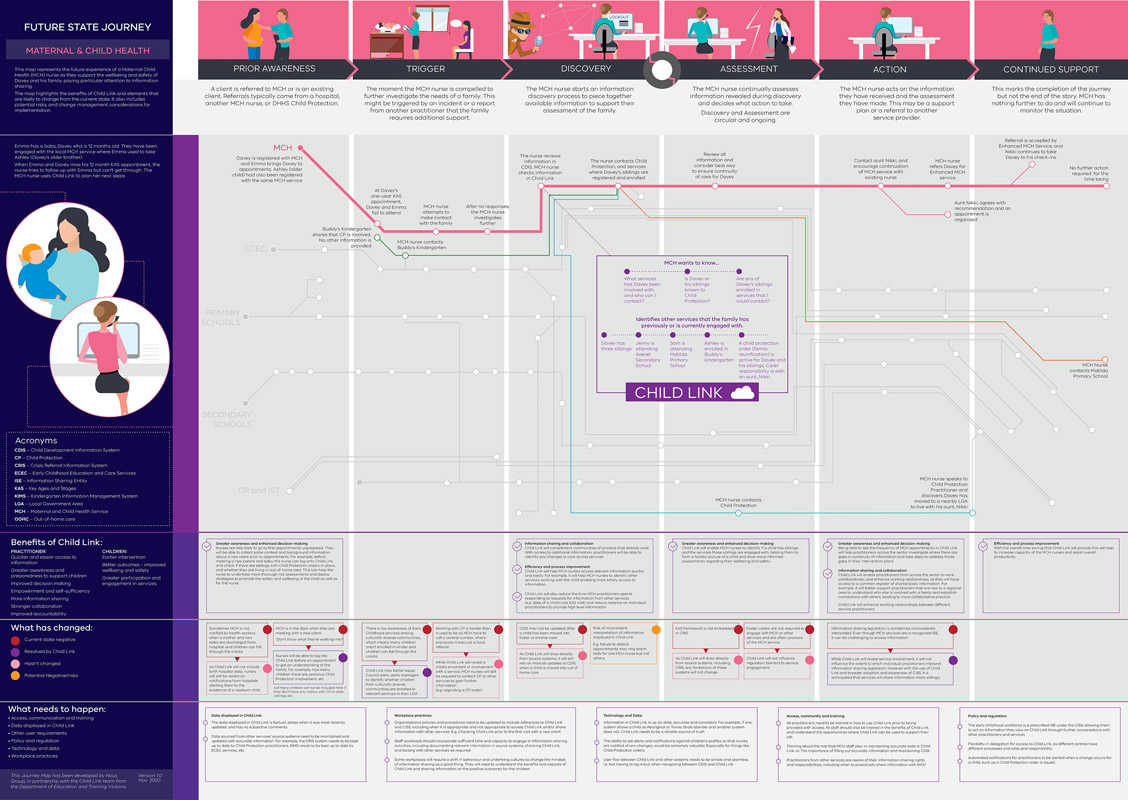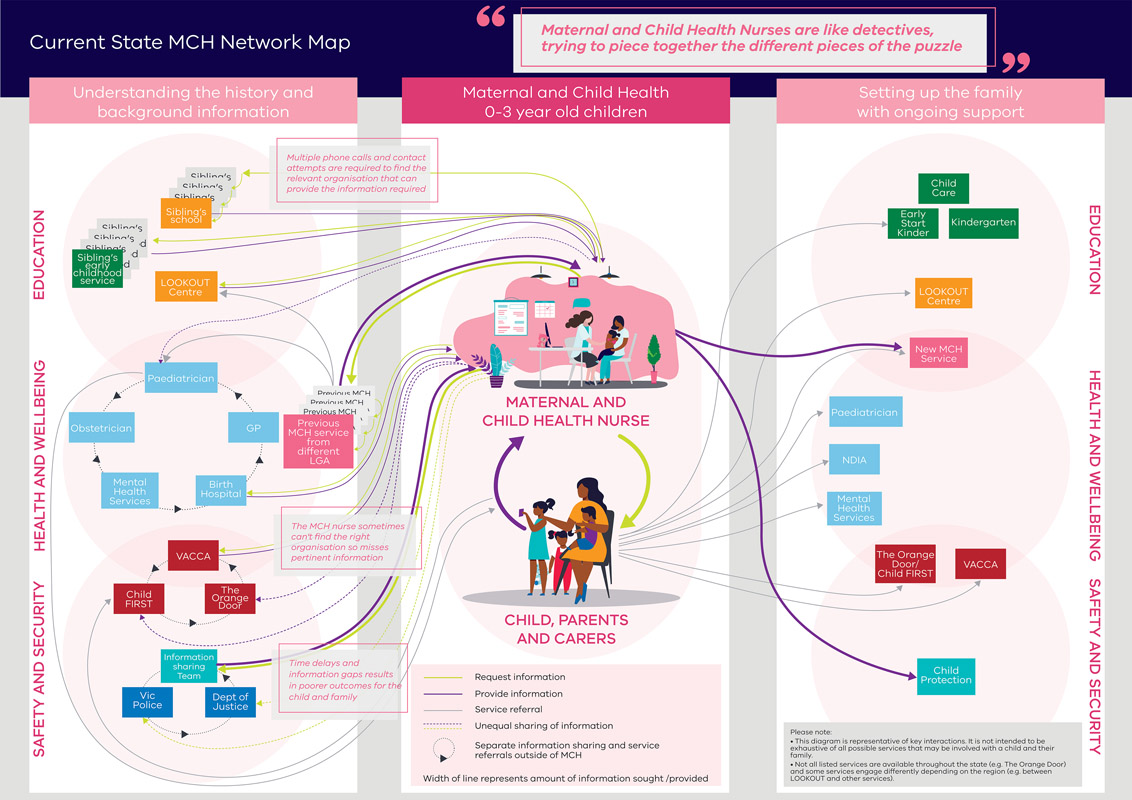In previously responding to this challenge there have been technology-first failures, where the needs of users were subordinate to the requirements of technical tools. Success this time around would depend on learning these lessons, so we sought to understand the context, environment, relationships and behaviours that drive information-sharing, being realistic about technology and taking a people-first approach.
We used HCD to understand current information-sharing and collaboration among agencies to support children. This included an understanding of the wider system, including organisations that support people who have experienced family violence.
Success required deep, early and sincere engagement with key stakeholders. We worked with practitioners to understand their current experiences, identify opportunities, and co-design future-state experiences.
To gain trust and insight from Child Link users, we developed engagement strategies personalised to each user group. These strategies involved aligning our consultation to the goals of users and an onboarding experience for each participant.
Communicating clear objectives and sharing information beforehand allayed fears this was merely a tick-box engagement.
In total we spoke with 72 practitioners, conducted 19 co-design workshops and eight validation sessions.
From this co-design process emerged several design products:
- five current state journey maps, highlighting the current arrangement
- five future state journey maps, highlighting the system view of a complex network of services and agencies
- five current state network diagrams, which represent information flows between practitioners and agencies
- five future state network diagrams, which represent indicative information flows and service referrals
- a comprehensive insights report that brings together the threads of the research.
These products are being used to guide implementation, including messaging and communications, change management and training, along with the design requirements of the system itself. The products reflect the reality that practitioners need information that helps them understand the events and risk factors to make better informed decisions.


